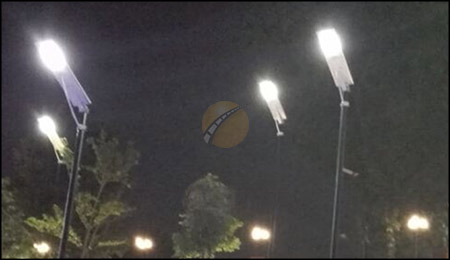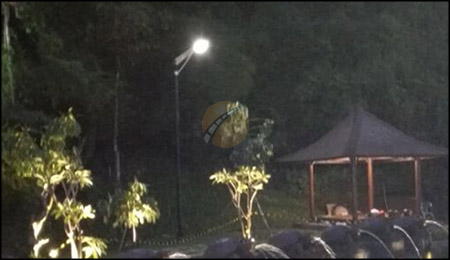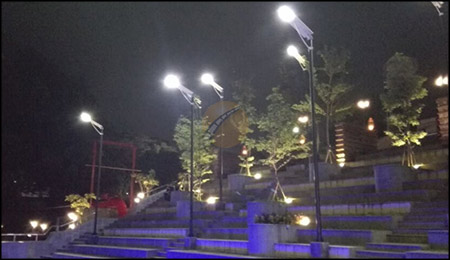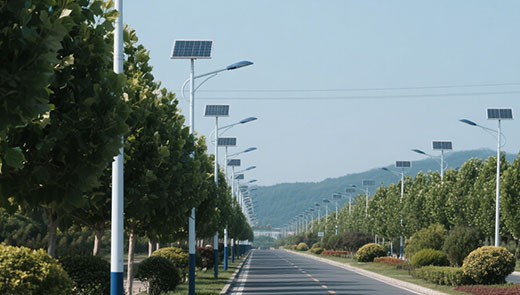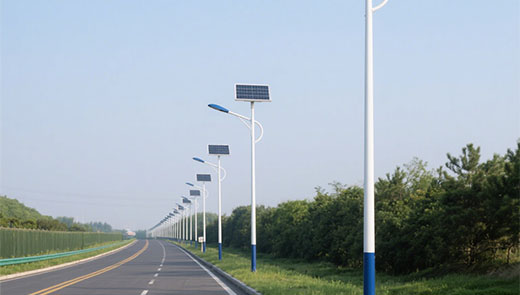How do solar street lights work?
Oct 30, 2024
With the growing emphasis on sustainability and the demand for efficient lighting solutions, solar street lights have gained popularity around the world. These lights use solar energy, an unlimited renewable resource, to provide nighttime illumination for roads, parks, parking lots, and other outdoor areas. In this article, we’ll look at how solar street lights work, their main components, and the benefits they bring to both urban and rural environments.
With their many benefits—from energy savings and enhanced safety to reduced environmental impact—solar street lights are transforming public spaces and setting new standards for sustainable urban infrastructure. As the world continues to focus on green technology and renewable energy, solar street lights will likely play a crucial role in illuminating our future.
How Solar Street Lights Work
Solar led street lights are composed of a few core components that work together to produce, store, and utilize solar power efficiently. Here’s how each element contributes to their operation:1. Solar Panel: Capturing Sunlight
- The solar panel, typically positioned on the top of the street light pole, contains photovoltaic (PV) cells that capture sunlight throughout the day. These cells convert sunlight into direct current (DC) electricity, which is then directed to a rechargeable battery for storage. High-quality monocrystalline or polycrystalline panels are often used for their efficiency and durability in capturing sunlight.
2. Rechargeable Battery: Energy Storage
- The rechargeable battery, usually lithium-ion or lithium phosphate, stores the energy generated by the solar panel. The battery is a crucial part of the system, ensuring that there is sufficient power to keep the lights on during nighttime and in cloudy weather conditions. The capacity of the battery is carefully chosen to support illumination for several hours, with some systems storing enough energy to light the streets for two or more days without sun.
3. Controller Unit and Sensors: Power Management and Automation
- A controller regulates power between the solar panel, battery, and LED lights. It prevents the battery from overcharging and helps manage energy efficiency, which increases battery life. Sensors are also built into the system, including light sensors that detect dusk and dawn and motion sensors that trigger brighter illumination when there’s movement nearby. These sensors optimize energy use by turning the lights on automatically when it’s dark and off when daylight returns.
4. LED Lights: Efficient and Long-Lasting Illumination
- Solar street lights use LED bulbs because of their high energy efficiency and bright, focused light output. LEDs consume very little power compared to traditional street lamps and have a significantly longer lifespan. The LED light in solar street lights provides reliable, consistent illumination for long hours, making them ideal for outdoor lighting applications.
Key Benefits of Solar Street Lights
Solar street lights offer a range of benefits that make them a practical choice for sustainable public lighting:1. Energy-Efficiency and Cost Savings
- By using sunlight as their primary energy source, solar street lights do not require external electricity and thus help reduce energy costs. This makes them an ideal choice for cities and municipalities looking to reduce their energy expenses and environmental impact. Solar street lights are also easy to install since they don’t require complicated electrical wiring or connection to the grid, lowering installation and maintenance costs.
2. Sustainability and Environmental Impact
- Solar outdoor lights provide an eco-friendly lighting solution by harnessing renewable energy, reducing reliance on fossil fuels, and minimizing carbon emissions. Since they are off-grid, they can be installed in remote areas, benefiting communities with limited access to electricity and improving road safety in rural settings.
3. Reliability and Resilience
- With batteries designed to store excess energy, solar street lights can operate reliably even in cloudy weather or during power outages, ensuring continuous illumination. Their design makes them a resilient solution for areas prone to power interruptions or natural disasters, providing consistent light where it’s needed most.
4. Enhanced Safety and Visibility
- In addition to being energy-efficient, solar street lights enhance safety by providing clear illumination along roads, walkways, and public spaces, helping to reduce accidents and deter crime. The built-in motion sensors in many models provide an additional safety feature, increasing brightness when people or vehicles are nearby.
5. Versatility and Flexibility in Deployment
- Solar road lights are suitable for a wide range of locations, including urban streets, parking lots, parks, and residential areas. With minimal maintenance requirements and no need for electrical infrastructure, they offer flexible deployment options in areas that lack reliable grid access or have challenging terrains.
With their many benefits—from energy savings and enhanced safety to reduced environmental impact—solar street lights are transforming public spaces and setting new standards for sustainable urban infrastructure. As the world continues to focus on green technology and renewable energy, solar street lights will likely play a crucial role in illuminating our future.

